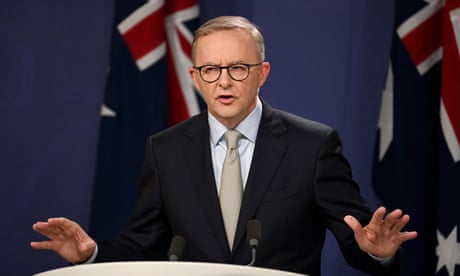- by foxnews
- 08 Apr 2025
It’s more important to know the impact of your policies than to know economic figures off-hand | Greg Jericho
It’s more important to know the impact of your policies than to know economic figures off-hand | Greg Jericho
- by theguardian
- 14 Apr 2022
- in news

Later on Thursday the new unemployment rate will come out, and because of the focus on the number this week (and whether or not leaders know it), it will probably get more focus than normal. Alas, most likely the number itself will get the focus rather than any economic policy surrounding it - including the conditions of those who remain unemployed.
One of the annoying things about the Albanese "gaffe" (such as it was) of forgetting the unemployment rate is that it enabled any discussion around economic policy to drift into the trivial.
There really is no reason anyone outside a contestant on Hard Quiz, whose topic is the current level of unemployment, needs to know offhand any economic figures.
I research wages and the labour market as a job and yet I always need to go back to the ABS page to discover the seemingly most obvious things, such as the current growth of GDP, the wage growth or even the unemployment rate.
Certainly, there is no moment ever in the job of being prime minister where someone is going to rush into the office and yell "we need to know the unemployment rate right now, prime minister, don't look on the internet, tell us now!"
And if there is, then we are all truly stuffed.
Far more important is to know the impact of your policies and whether the unemployment rate is missing anything important.
Now I am certainly not in the camp that we can ignore the unemployment rate. It is a good measure for what it claims to be, and there really is nothing that is improved in the economy when unemployment rises.
But when the unemployment rate falls, that does not necessarily mean all things (or indeed many things) are improved.
And any discussion of employment should always go to what kind of work - how secure is it? How well does it pay? How are the conditions?
Looking at the recovery needs a bit more than just telling us a number of people are in work, or that a certain percentage of those in the labour force are still looking for work. Economic debate needs to be more than journalists acting like quizshow hosts.
Consider that back in February 2020, before the pandemic punched the economy in the solar plexus, 80% of all waged employees (ie excluding owner-managers) had access to paid leave.
That does not make them permanent - it includes many whose work remains insecure. They could for example be on short-term contracts, but it is at least a "non-casual" level of employment.
And yet mostly they were the ones spared the massive loss of work during the pandemic:
If the graph does not display click here
Nearly three-quarters of the employment lost from February 2020 to May 2020 was casual work - and 40% of all employment loss was women who worked casual. That is a truly astounding number given they made up just 13% of all waged employees.
And so it has been with the recovery.
Yes there has been a strong return of work, but overwhelmingly it has been in casual work:
If the graph does not display click here
Consider that part-time casual women employee made up 10% of all waged-employees, but accounted for 17% of the recovery of work.
So yes, great to have a recovery. But how secure it is?
One area in which we can see the insecurity is that while the numbers of people unemployed has fallen, the numbers of people on jobSeeker or the youth allowance is now higher than it was before the pandemic:
If the graph does not display click here
Now there are few reasons why this has occurred, and a major one is that in September 2020 the government raised the amount of income you could earn before you lost eligibility to be on jobseeker.
This does not explain it all - there is clearly an increase in those who are sick and eligible for jobseeker now, compared with before the pandemic - but it also points to an important issue about how we look at unemployment.
To no longer be eligible to receive jobseeker, a single person needs to earn more than $1,253.50 a fortnight - essentially right on the poverty rate in September last year of $1,225.30.
But we should note that about 80% of those on jobseeker do not earn any income. For them, the poverty line is miles away, and further now than in the past.
If the graph does not display please click here
This week Labor announced they would not be raising it, and neither will the LNP.
And yet both are committed to the Stage 3 tax cuts which will deliver up to a $9,075 cut for someone earning over $200,000.
If the graph does not display click here
As Amy Remeikis noted on Wednesday, the Stage 3 cuts, which are due to come into effect in the 2024-25 financial year, are expected to cost $17bn a year, while increasing jobseeker by $95 a week would cost about $5bn a year.
Debating why you would do one and not the other might actually be an economic debate worth having.
- by foxnews
- descember 09, 2016
Ancient settlement reveals remains of 1,800-year-old dog, baffling experts: 'Preserved quite well'
Archaeologists have recently unearthed the remarkably well-preserved remains of a dog from ancient Rome, shedding light on the widespread practice of ritual sacrifice in antiquity.
read more


